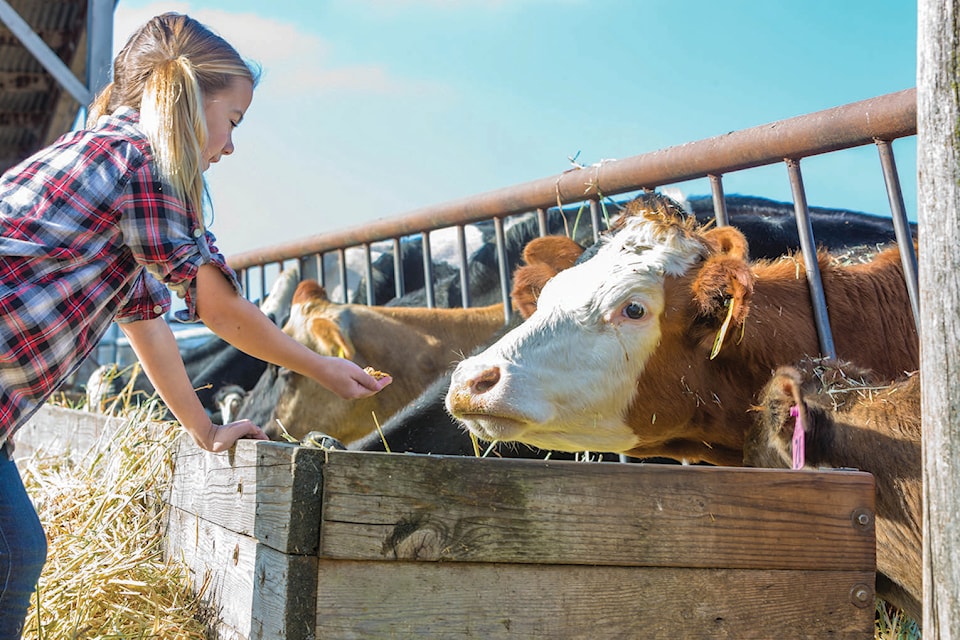While the COVID-19 pandemic has drawn more attention to local food security, the topic has been on the mind of the Regional District of Kitimat-Stikine (RDKS) economic development commission for years.
In September, the commission received a completed Agricultural Sector Support Plan by Upland Agricultural Consulting which will guide how the regional district can help.
“The need to support agriculture businesses was identified in the economic development commission’s strategic plan which was printed in 2018,” said Maggie Hall, RDKS economic development officer.
“The reason for doing this [agriculture] sector support plan is to identify how we can actually do that, you know what’s going on in the region and then what are some steps that we as local government can take to be able to support that sector.”
The report is multi-faceted — it offers a review of the current state of agriculture in the region, stakeholder engagement and lays out four goals, 13 recommendations and 36 associated actions for the RDKS to take.
Hall said it is important to understand the reality of the agriculture sector now to be able to plan for the future and best support the industry.
It found that most agricultural activity consists of small to mid-scale mixed production farms with some limited larger operations.
There are 65,992 hectares of agricultural land reserve (ALR) in the RDKS, significantly less than 373,544 hectares in the Regional District of Bulkley-Nechako but more than 43,195 hectares in the North Coast Regional District. The vast majority of ALR parcels are in the southern portion of RDKS.
ALR is a provincially-designated zone that recognizes agriculture as the primary use. It is made up of land that has the ability to grow food, but not all crops and livestock can be grown on all ALR zones.
The report pointed to the 2016 Statistics Canada Census of Agriculture, which found that there were 99 farms operating within the RDKS, cultivating everything from hay, veggies, nuts, berries, poultry, horses, sheep, goats, cattle, rabbits and bees.
Many of those farms are larger than 10 acres in size, with only 16 per cent under 10 acres, 30 per cent between 10 and 69 acres and 54 per cent over 70 acres. Farms in the area typically have small profit margins, with half reporting less than $10,000 gross income per year. Only 12 per cent of farms earned more than $50,000 per year.
Barriers to larger scale food production include the fact that there is no large commercial-scale food processing or value added infrastructure in the area and few stores provide for the basic needs of farms.
“They did a really comprehensive stakeholder engagement, so they got in touch with producers themselves and then a number of agriculture and other similar sector support agencies so we were able to get some on the ground local-level understanding about what the needs are for the industry,” said Hall.
Stakeholder engagement found that there is a strong interest in increasing local food security, increased collaboration between community organizations, fostering relationships with Indigenous communities to address food sovereignty and the desire to recognize stewardship of traditional territories for food provisioning.
One of the valuable results of the study was an Agricultural Asset Map, with the goal of connecting producers with consumers and highlighting local food retailers in the region.
“What’s great about it is that it’s not just producers, but it does contain a number of producers on the map which is awesome. It’s also community organizations. They’ve got community gardens in there, nurseries, farmers markets, butchers, things like that, and the map is updatable. Already I’ve added in a couple producers that weren’t on the map,” said Hall.
The main goals outlined for the regional district in the plan are to continue to collect knowledge about the sector, raise awareness of agriculture in the region, support new businesses and production and develop market viability — goals which have taken on a new meaning since the COVID-19 pandemic.
“The effects of COVID are mentioned in there, the report itself is pretty timely because when all this kind of craziness started happening, everyone really understood the value of our local food systems.”
